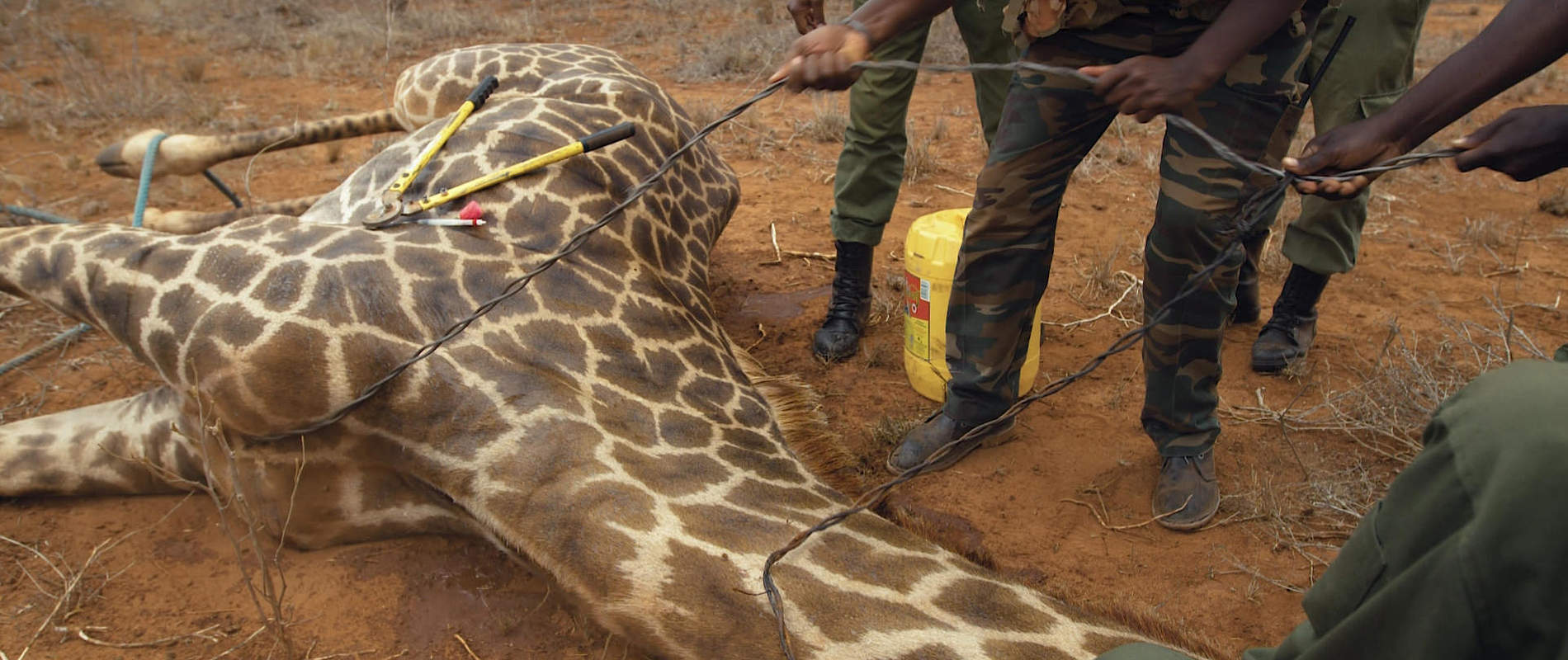We received the call on the morning of 18th October: During a patrol of Taita Ranches, Wildlife Works rangers caught a glimpse of a snared giraffe. Their pilot was able to confirm that the giraffe was trailing a thick cable around her neck. While we mobilised a team to help, he kept eyes on her from the air.
Our helicopter immediately flew to the scene, where we convened with Wildlife Works and the SWT/KWS Tsavo Mobile Veterinary Unit. After collecting Dr Poghon, the helicopter took flight again to shepherd the giraffe towards the waiting ground teams, as the surrounding area was thick bush. Once the patient was close enough to them, the vet darted her from the air. As the anaesthetic began to take effect, the helicopter continued to steer the giraffe closer to the ground teams so they could complete the treatment.
When it comes to treating giraffes, time really is of the essence. They have very high blood pressure, which means it is vital to revive them before the anaesthetic takes full effect. So, the moment the giraffe began to show signs of sedation, the ground teams needed to rush in and skilfully rope her legs to safely bring her to the ground. Once down, they secured the head. Giraffes cannot stand up without swinging their head, so this ensured the patient would be — quite literally — in safe hands for the duration of treatment.

Dr Poghon fires the anaesthetic dart into the patient

Ground teams rush in to safely bring the giraffe to the ground
Fortunately, the snare had not yet sliced into the skin. However, it was only a matter of time before the two metres of cable trailing behind caught on something and created a garrote. Given the size and gauge of the snare, it was almost certainly set by bushmeat poachers to catch giraffes. Rangers are further investigating the situation in the hopes of finding the people responsible.
While this giraffe was unlucky enough to find herself snared, her story had a happy ending. After cutting her free from the cable, the team released her head and she swung easily to her feet and strode safely off into the bush, a majestic creature spared from an unjust fate.

The team prepare to cut away the two metre long cable snare

Freed from the cable, the giraffe swung easily to her feet and strode off into the bush
